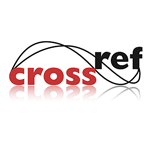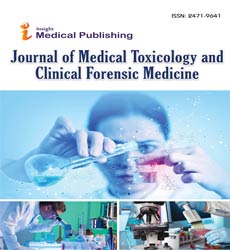"Multicenter Scientific Collaboration: Future of Clinical Toxicology"
Konstantin M Brusin
DOI10.21767/2471-9641.10004
Regional Poisoning Treatment Centre, Clinical Psychiatric Hospital, Yekaterinburg, Russia
- Corresponding Author:
- Konstantin M Brusin
Regional Poisoning Treatment Centre
Clinical Psychiatric Hospital, Yekaterinburg, Russia
Tel: 79122872491
Fax: 73432619996
E-mail: km.brusin@gmail.com
Received date: Nov 02, 2015, Accepted date: Nov 09, 2015, Published date: Nov 16, 2015
Citation: Brusin KM. "Multicenter Scientific Collaboration: Future of Clinical Toxicology". J Med toxicol clin forensic med. 2015, 1:1.
Development of clinical toxicology is retarded by lack of prospective controlled trials. This fact was underlined in many recent reviews and guidelines [1,2]. Actually we can see case and case series descriptions regularly published but large comparative researches of treatment given to poisoned patients are scarce. Working in toxicological unit for 24 years I can observe several barriers to toxicological research:
First of all it is a lack of cases. Toxicological service is presented by poison information centers (PICs) in majority of countries. PIC’s data as a rule don’t include cases admitted to general hospitals which were not consulted in PIC. Limitations of PICs data have been described by Hoffman RS [3]. Poisoning treatment units which exist in some big hospitals usually admit not more than 1,000 poisoned patients annually and there are only a few units all over the world admitting more than 5,000. Lack of patients causes the lack of cases which can be involved into the studies. For example we wanted to check if hemodialysis is effective for baclofen removing. But we have only 6–8 cases of severe baclofen poisoning annually. How many years will it take us to complete our study?
The next barrier is lack of toxicological analysis availability. Especially it is concerned to toxic agent measurement. It complicates the dose - response studies and evaluation of toxin removing techniques effectiveness.
And the last – approaches to the poisoned patient’s management are different. For example gastric lavage is used for 34% poisoned patients in Yekaterinburg, Russia [4] and for 9% in Oslo, Norway [5]. Sometimes it is impossible to compare the patient’s outcomes even in different hospitals located in the same city.
It is difficult to overcome these barriers but we are able to do it. Only joint multicenter studies allow us to produce evidence base recommendation. We could see excellent examples of international collaboration for the latest time: American College of Medical Toxicology established the ToxIc, a prospective registry for toxic exposures managed by clinical toxicologists in 2010 [6], we could see excited analysis of risk factors related to poor outcome after methanol poisoning given by toxicologists from five countries in 2012 [7]. Euro-DEN Research Group was established for recreational drugs poisoning study in 2013 [8]. The benefit of such investigators associations is a possibility to collect data in united protocol prospectively with appropriate quantity of cases.
I would like to encourage our authors to cooperate for toxicological researches. I do believe this collaboration will give us a development of clinical toxicology. We will be excited to publish the manuscripts produced by a multicenter research networks.
References
- Ghannoum M, Yates C, Galvao TF, Sowinski KM, Vo THV, et al. (2014) Extracorporeal treatment for carbamazepine poisoning: Systematic review and recommendations from the EXTRIP workgroup. Clinical Toxicology 52:993–1004.
- Wittebole X, Hantson P (2011) Use of the molecular adsorbent recirculating system (MARS TM) for the management of acute poisoning with or without liver failure. Clin Toxicol (Phila)49:782–793.
- Hoffman RS (2007) Understanding the limitations of retrospective analyses of poison center data. Clinical Toxicology 45:943–945.
- KrayevaYuV, BrusinKM, Bushuev AV,Kondrashov DL, Sentsov VG, et al. (2013) Pre-hospital management and outcome of acute poisonings by ambulances in Yekaterinburg, Russia. ClinToxicol (Phila) 51: 752-760.
- Lund C, Drottning P, Stiksrud B, Vahabi J, Lyngra M, et al. (2012) A one-year observational study of all hospitalized acute poisonings in Oslo: complications, treatment and sequelae. Scandinavian Journal of Trauma, Resuscitation and Emergency Medicine 20:49.
- Wiegand TJ, Wax PM, Schwartz T, Finkelstein Y, Gorodetsky R, et al. (2012) The toxicology investigators consortium case registry – the 2011 experience. J Med Toxicol 8:360-377.
- Paasma R, Hovda KE, Hassanian-Moghaddam H, Brahmi N, Afshari R, et al. (2012) Risk factors related to poor outcome after methanol poisoning and the relation between outcome and antidotes – a multicenter study. Clinical Toxicology 50:823-831.
- Wood DM, Heyerdahl F, Yates CB, Dines AM, Giraudon I, et al. (2014) The European Drug Emergencies Network (Euro-DEN). Clinical Toxicology 52:239-241.

Open Access Journals
- Aquaculture & Veterinary Science
- Chemistry & Chemical Sciences
- Clinical Sciences
- Engineering
- General Science
- Genetics & Molecular Biology
- Health Care & Nursing
- Immunology & Microbiology
- Materials Science
- Mathematics & Physics
- Medical Sciences
- Neurology & Psychiatry
- Oncology & Cancer Science
- Pharmaceutical Sciences
